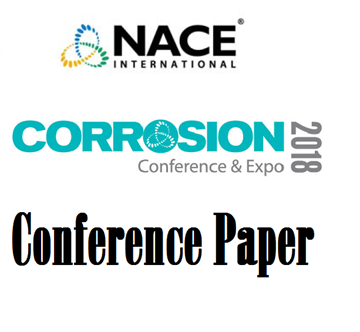This paper summarizes the results of a multiphase flow internal corrosion direct assessment (MP-ICDA) which was performed on a header pipeline in the Tambaredjo North West (TNW) oil field of Staatsolie in Suriname. This pipeline has a total length of 4801 m: with a 10 inch nominal diameter region which is 415 m long and a 14 inch nominal diameter region which is 4386 m long carrying multiphase crude oil. The pipeline material is carbon steel API 5L GR.B. ERW BW DRL externally coated to TGF 3. The upstream production system in the field consists of producing wells on primary recovery with production lifted by progressive cavity pumps (PCP’s). By the end of 2013 the field had 210 oil producing wells producing 4600 bfpd /3216 bopd with very minimal oxygen contamination in the system. All the production flow from the TNW oilfield is transported through this header pipeline. There are three waterway crossings on the pipeline; widths of these crossings are approximately 40 m 50 m and 115 m respectively. At the crossings the pipeline drops to an approximate depth of 2.5 meters below the surface of the water crossing and rises back to the surface after crossing the waterway.This paper includes the pre-assessment indirect examination or internal corrosion predictive modeling (ICPM) direct examination and post-assessment results including the predicted accumulated wall loss according to the header’s different operational conditions the remaining safe in-service life of this header the remaining wall thickness along the TNW header’s elevation profile and reassessment interval. All the direct assessment (DA) steps were performed in compliance with the guidelines of pertinent NACE Standard Practices.The pre-assessment and indirect examination sections were completed first and results were provided in the indirect examination report. Based on this the direct examination step using ultrasonic wall thickness measurement technique was conducted by the pipeline operator. All the Direct Examination (DEx) results were provided to Broadsword to conduct the post assessment step which is also discussed in this paper.The scope of this project also included a “what-if” phase in which five possible future operational scenarios were investigated. This analysis enables the pipeline operator predict the probable corrosion rate for the expected future operational conditions (e.g. increased water-cut lower/higher operational pressures or temperatures seasonal effects further souring of the reservoir change in the mole composition of the associated gas etc.).Conclusions and recommendations in this paper were generated based on the performed DA assessment and the recommended mitigation measures are anticipated to reduce the risk of internal corrosion occurrences in the pipeline




